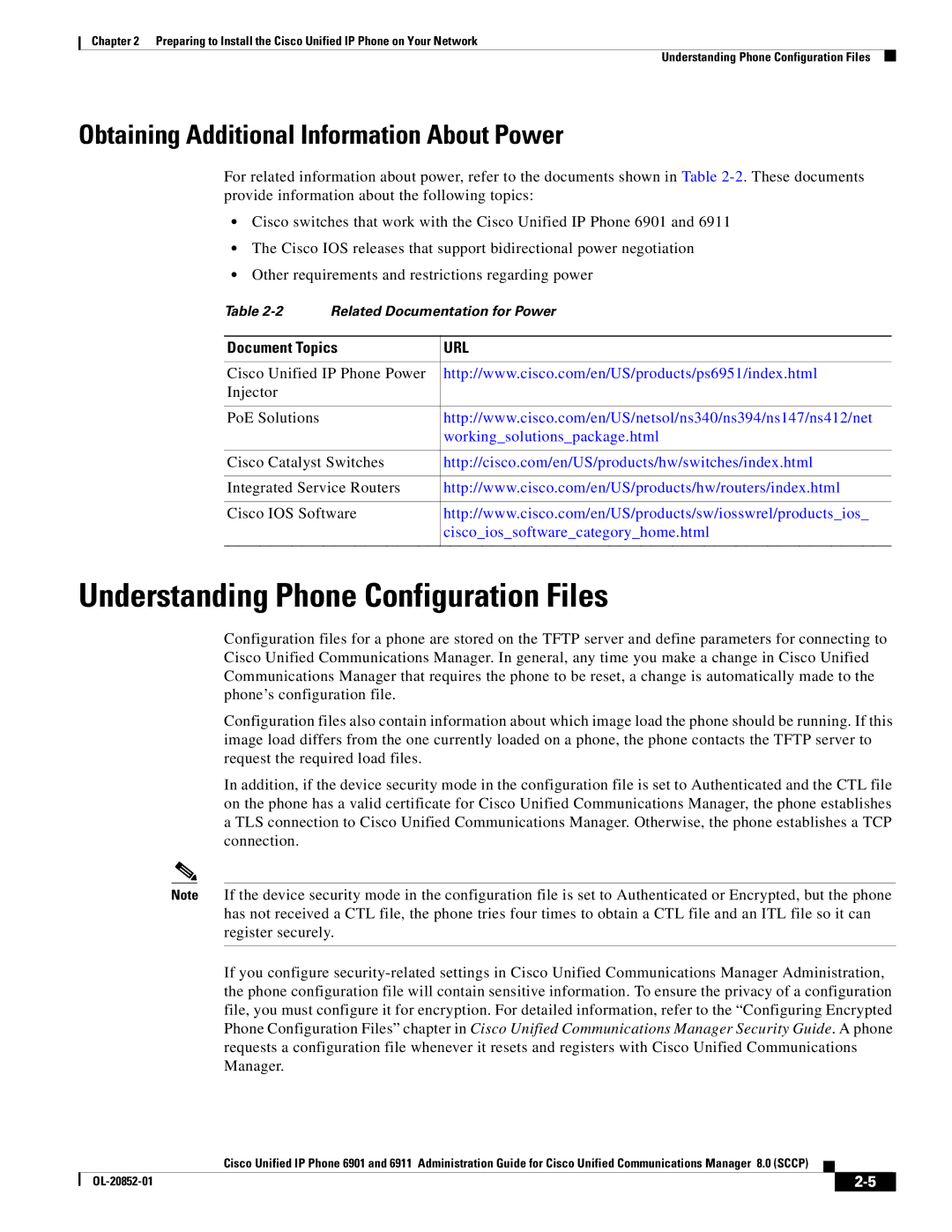
Chapter 2 Preparing to Install the Cisco Unified IP Phone on Your Network
Understanding Phone Configuration Files
Obtaining Additional Information About Power
For related information about power, refer to the documents shown in Table
•Cisco switches that work with the Cisco Unified IP Phone 6901 and 6911
•The Cisco IOS releases that support bidirectional power negotiation
•Other requirements and restrictions regarding power
Table
Document Topics | URL |
|
|
Cisco Unified IP Phone Power | http://www.cisco.com/en/US/products/ps6951/index.html |
Injector |
|
|
|
PoE Solutions | http://www.cisco.com/en/US/netsol/ns340/ns394/ns147/ns412/net |
| working_solutions_package.html |
|
|
Cisco Catalyst Switches | http://cisco.com/en/US/products/hw/switches/index.html |
|
|
Integrated Service Routers | http://www.cisco.com/en/US/products/hw/routers/index.html |
|
|
Cisco IOS Software | http://www.cisco.com/en/US/products/sw/iosswrel/products_ios_ |
| cisco_ios_software_category_home.html |
|
|
Understanding Phone Configuration Files
Configuration files for a phone are stored on the TFTP server and define parameters for connecting to Cisco Unified Communications Manager. In general, any time you make a change in Cisco Unified Communications Manager that requires the phone to be reset, a change is automatically made to the phone’s configuration file.
Configuration files also contain information about which image load the phone should be running. If this image load differs from the one currently loaded on a phone, the phone contacts the TFTP server to request the required load files.
In addition, if the device security mode in the configuration file is set to Authenticated and the CTL file on the phone has a valid certificate for Cisco Unified Communications Manager, the phone establishes a TLS connection to Cisco Unified Communications Manager. Otherwise, the phone establishes a TCP connection.
Note If the device security mode in the configuration file is set to Authenticated or Encrypted, but the phone has not received a CTL file, the phone tries four times to obtain a CTL file and an ITL file so it can register securely.
If you configure
Cisco Unified IP Phone 6901 and 6911 Administration Guide for Cisco Unified Communications Manager 8.0 (SCCP)
|
| ||
|
|
